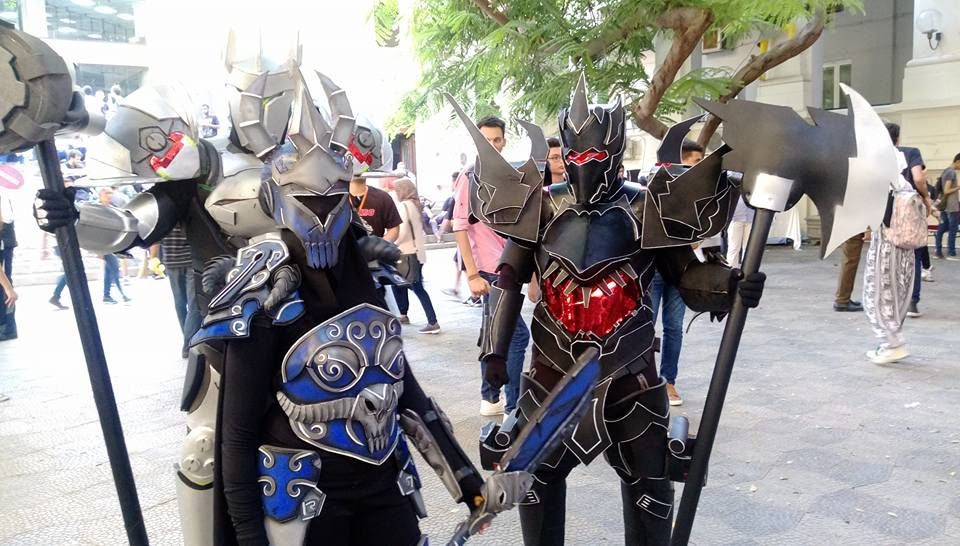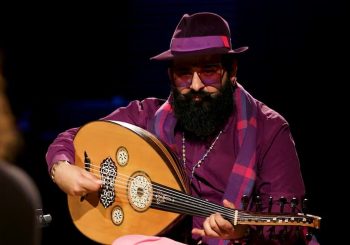For Japanese anime and manga storytellers — the Japanese version of animation and graphic novels — the precipice of a story lies not in its start or ending, but in the moments that unfurl within it. Every stumble, every small triumph, and every setback can carry a deeper message, and evoke stronger emotions, than the ending alone.
Life unfolds, not concludes. Unlike a final victory or a happily-ever-after, the story stretches towards an infinite horizon. Endings, when they come, are often ambiguous, mirroring the complexity of our experiences.
After all, how can a story truly capture life’s absurditiy if it always provides a definite ending?
For years, Hollywood giants such as Disney, Warner Bros., and Marvel have set the standard for storytelling templates in global youth entertainment. These formulas have traditionally held sway over global storytelling.
However, the global entertainment landscape is slowly becoming more diverse. Digital streaming platforms have reshaped storytelling, moving away from the cathartic thrill of a blockbuster on the big screen and towards the intimate moments viewers connect with in the comfort of their own homes.
Besides streaming services, online communities also provide fertile ground for diverse stories to thrive and reach Egyptian audiences. Platforms such as Reddit, Facebook groups, forums, and apps have revolutionized how young audiences engage with entertainment. It’s not just about the story alone but also about the community and shared connections it cultivates.
Cultural Varieties in Storytelling Styles
The space between what we feel and express, and what we know and share, is filled by stories; a narrative that connects together our thoughts and emotions, allowing us to express the intricate world within us to the one outside.
The way stories are also told in each culture mirrors how that particular culture sees the world, embodying their values and beliefs. A single story can shape, build and even erase one’s identity. But without stories, we’d be isolated, lacking a common language to connect.
Many Western stories follow a familiar hero’s journey, a concept explored by Joseph Campbell in his influential book, ‘The Hero with a Thousand Faces’ (1949). This journey typically sees a hero get a nudge towards an adventure, hesitate at first, then gain guidance from a mentor.
The hero sets out to find meaning in the adventure, experiences a moment of revelation, triumphs over challenges, and returns home forever changed by their experiences.
These archetypes serve as shortcuts in our minds, creating a stark contrast between good and evil. Stories like Peter Pan, Alice in Wonderland, and The Lord of the Rings use clear visual and character contrasts, where the good characters strive for order, creation, and compassion, while the evil ones seek destruction, control, and domination.
While Disney’s storytelling has undergone changes over time, with ‘Inside Out 2’ (2024) showcasing the protagonist’s ability to express a range of emotions — from anger to compassion, loyalty to disloyalty — the core storytelling template remains influential in many of their films.
In contrast, Japanese storytelling, particularly in anime and manga, often deviates from the clear-cut hero-villain dynamic prevalent in the West. For example, ‘Fullmetal Alchemist’ (2003–2004), the acclaimed manga series by Hiromu Arakawa, delves into the hearts of its antagonists, allowing the audiences to understand that these characters aren’t simply villains, but individuals driven by a complex web of desires, regrets, and past traumas.
Another important distinction is that Eastern cultures, especially Japan, often view nature and humanity as interconnected, rather than placing humans at the center.
This emphasis on nature’s role extends to the concept of wabi-sabi in Japanese culture, which values impermanence and finding beauty in imperfection. This philosophy resonates in many anime and manga stories, where the harmony and continuation of life, even amidst change and decay, takes center stage.
This is also why the aesthetic of Japanese storytelling is intentional, and is largely driven by a deep appreciation for nature. Many manga and anime creators, who are often artists themselves, imbue their work with a keen eye for the natural world.
Japanese Culture Takes Root in Egypt

Although there are limited studies on the appeal and influence of Japanese popular culture in Arab countries, it is evident that Japanese culture, alongside Korean dramas and music, has significantly grown over time.
A 2022 study on streaming trends in Egypt highlighted that “Japanese Animation” ranked as the third most sought-after subgenre across six different platforms.
Anime’s popularity in Egypt began with the airing of Arabic dubbed versions of television series like ‘Mazinger Z’, ‘Grindizer’, and ‘Captain Tsubasa’ (known as Captain Majed in Arab countries) on the Spacetoon satellite TV channel in the late 1990s.
Fueled by the internet boom of the 2010s, Egyptian anime and manga enthusiasts established numerous online and offline platforms to express their passion for Japanese pop culture. These include social media fan pages and groups like “Anime Aiko Ka Egypt” on Facebook, as well as the “Japanese Community in Egypt” group.
Offline gatherings include gaming conventions like EGYcon, E-Sport summit, and Gamer’s Lounge, which offer a chance for fans to connect in person.
For Mohamed Hassan, 32, member of the Japanese Community in Egypt, Japanese manga became more than just entertainment. It opened a door to a deeper understanding of Japanese culture, eventually inspiring a career path as a copywriter for Japanese websites.
Despite growing up watching anime, his demanding work schedule required a simpler form of entertainment that could be accessed anytime, which is why he turned to manga.
“I was working night shifts as a hospital pharmacist, and watching anime was difficult during those shifts, so I needed something quick and straightforward. That’s when I decided to download Tokyo Ghoul and Katekyoshi Hitman Reborn,” he shared with Egyptian Streets.
The intricate details and storytelling in manga captivated Hassan, a stark contrast to his experience with anime. “The paneling and expressive artwork completely reshaped my understanding of shows I thought I knew intimately,” he explained.
The ongoing continuity of manga, with its stories that seem endless, has provided Hassan with a sense of companionship and belonging in his life. “The evolving weekly stories of manga have been a constant companion for me, always leaving me anticipating what comes next. I believe many people go through life without experiencing that feeling,” he reflects.
As an Egyptian, Hassan was intrigued by the connection between Egyptian hieroglyphs and Kanji, the Japanese writing system. “Both are visual languages based on drawings, which I find soothing to read and can evoke a sense of mythology and intrigue,” he noted.
Due to the scarcity of Arabic-translated manga, Hassan decided to pursue Japanese language courses more seriously. He began studying Japanese and recently achieved his N3 level Japanese Language Proficiency last year. Recently, he was also accepted into the Japanese Language Teacher Training Course (Nihongo Kyoshi Yousei Kouza).
Currently, he runs a copywriting business where he works as a journalist covering games. His proficiency in Japanese has enabled him to reach out to Japanese publishers and translate Japanese news.
Hassan is not the only Egyptian whose passion for Japanese pop culture has propelled them into a career. Serah Youssef, known as Serah Samba within the manga and anime community, is among the community’s veterans and the founder of SaMBa Art Production, where she engages in cosplay and creates art and designs inspired by anime and manga.
Serah has also launched a social media platform called “Hello اليابان (Hello Japan)” to foster greater understanding and appreciation of Japanese culture among a wider audience.
One of the core aspects of Japanese culture that Serah appreciates personally, and which is prominently portrayed in Japanese anime and manga, is the emphasis on consideration towards others.
“What I believe we can learn from Japanese culture is how children are raised to be considerate towards others. From a young age, they are taught the importance of teamwork; for instance, students clean their schools together,” she explains.
As an artist, Serah credits Japanese manga for enhancing her own artistic skills and abilities. She is particularly enamored with the aesthetic intricacy found in Japanese manga, which is why her favorite series is Bakuman (2008-2012), which follows the journey of Moritaka Mashiro, a talented artist, and Akito Takagi, a writer, in how they became manga artists.
Unlike other storytelling formats that often prioritize definitive resolutions, anime and manga frequently embrace continuous storylines, which fosters a sense of ongoing discovery and speculation.
Menna Fahmy, a recent graduate, is an avid manga reader who finds great enjoyment in analyzing upcoming events and situations in each new chapter, predicting outcomes with accuracy, often achieving up to 90 percent.
“We always look forward to anticipating what happens next, eagerly awaiting the manga leaks before they’re translated into Arabic or English,” she explains.
Beyond its aesthetic visuals that resonate with Egyptian fans, manga’s unique storytelling, prioritizing continuity over resolution, is a strong influence on youth entertainment and their evolving worldview.
As streaming platforms continue to grow, this storytelling format may lay the groundwork for the emergence of a new generation of storytellers, shaping the future of entertainment.







Comments (2)
[…] Japanese culture becomes increasingly significant in Egyptian homes, with many young people embracing Japanese pop culture, […]
[…] post How Japanese Pop Culture Is Shaping Egyptian Youth first appeared on Egyptian […]